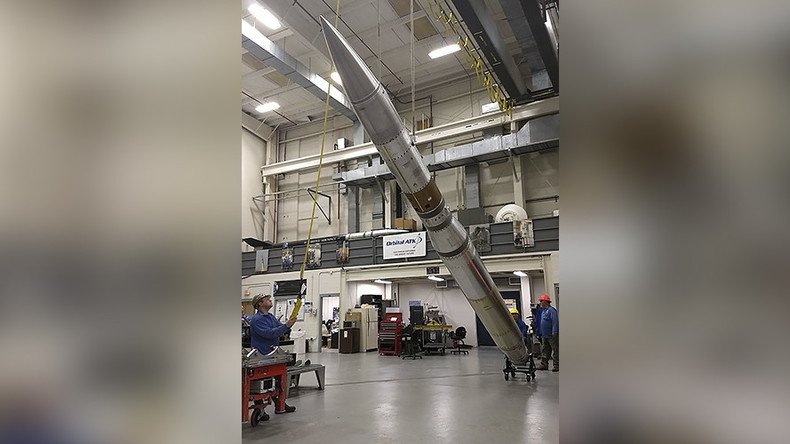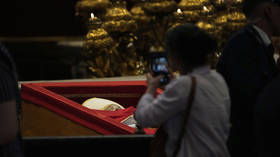NASA rocket to blast into empty space & study starlight (PHOTO)

NASA say the void between galaxies is not that empty at all and are preparing to launch a new rocket equipped with special ultraviolet equipment to study starlight and other contents of an environment known as the intergalactic medium (IGM).
While they are completely hidden to the eye, hot gases such as hydrogen are known to be contained in the IGM, where radiation has stripped electrons from atoms.
READ MORE: Interstellar traveler: Speeding space rock is first to be seen in our solar system
NASA believe starlight from other galaxies may be responsible for this process known as ionization, which is considered to have helped light permeate sprawling parts of the universe in a stage before the Big Bang event known as the “cosmic dark ages”.
Back then, the universe was a non-transparent entity according to the US space agency.
Nicknamed the Dual-Channel Extreme Ultraviolet Continuum Experiment, or DEUCE, the rocket will measure starlight from the Canis Major constellation.
Don't be afraid of the dark! We're launching a sounding rocket on Monday to study the dark voids between galaxies: https://t.co/k2DTZcSHrYpic.twitter.com/SQUK5oq0Nd
— NASA Sun & Space (@NASASun) October 27, 2017
According to Nicholas Erickson, a researcher from the University of Colorado working on the project, the fifteen minute DEUCE flights will help analyze the origins of the universe.
“DEUCE is about being able to better understand if and how star-forming galaxies ionized the early universe,” he said.
“This ionizing light has never been measured accurately in hot stars, and DEUCE will make the first calibrated measurement of it, telling us the contribution stars could have had to helping ionize the universe.”
The universe is full of ionized gas we can only see in ultraviolet light. This small rocket will help us study it. https://t.co/0SxEvBJ0S9pic.twitter.com/DNmVDztQGO
— NASA Goddard (@NASAGoddard) October 28, 2017
On October 30, the rocket will launch from White Sands Missile Range Las Cruces in New Mexico to measure ultraviolet light from the star Beta Canis Major.
A second mission to extract ultraviolet light from the star Epsilon Canis Major is due to take place in December 2018.
Erickson added that since Earth’s atmosphere blocks ultraviolet light, it is pretty much impossible to gather such information on stars without breaking through into space.
READ MORE:NASA exploring whether a ‘magnetic tail’ is destroying Martian atmosphere
He said Beta Canis Major and Epsilon Canis Major provide the best opportunity for the study of starlight.
“It’s a hard measurement to make, because there still is neutral hydrogen between stars that is extremely effective at absorbing the starlight,” he said.
“To be seen at Earth, you need a really bright star that’s close by, and there are only two stars that are viable candidates for this measurement.”













